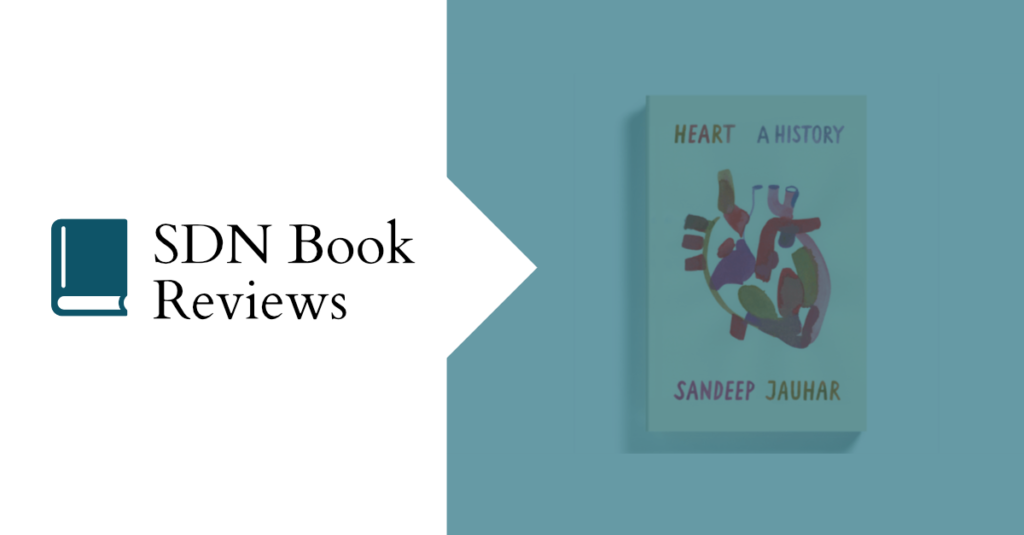Medical nonfiction, as a genre, has grown considerably in recent years as many physicians have taken to writing for a broader audience. Although physicians have always been writers—documenting new research and ideas as various fields of medicine have progressed—these writings have frequently been distributed within the medical community. Patients, however, and the general community outside of medicine, benefit greatly when physicians write for a more general audience; doctors like Robert Coles or Oliver Sacks are two prominent examples. One of the modern voices who fits this description is Sandeep Jauhar, whose writings have appeared consistently in The New York Times Op-ed section for many years. Further, his previous books—Intern, chronicling his experience in his first year of residency, and Doctored, outlining his disillusionment with and struggles within the American healthcare system—were well-received, and have firmly established him as a compelling voice for American medicine.
In his newest book, he takes a different approach than his previous two books. While both Intern and Doctored are best described as memoir, Heart: A History is only partially so. Although there are elements of memoir, most of the book is written as a sort of biography of the human heart. Jauhar sets up the value of this book well in the early chapters, with a brief discussion of his family and own personal health history, highlighting his interest in the heart. As a specialist in heart failure, he clearly has the knowledge and experience to discuss the pathophysiological side of the issue, as well as advancements in technology, but what makes the books more meaningful is the personal connection. He introduces this early and then returns to it throughout the book.
Heart briefly addresses the view of the heart in antiquity, the long-lasting human view that it is an “untouchable” organ, and how these lingering beliefs—which still exist as cultural understandings, idioms, and metaphors—have actually hindered advancements in heart treatments, particularly procedural advances. These heart-related metaphors which persist are addressed in an early chapter, but Jauhar weaves them beautifully throughout the book as well. “I would have liked to tell my fellow students about an immigrant with a broken heart,” he writes, of an experience at a cadaver memorial service. “It would have been in keeping with the atmosphere of that evening. But I had a change of heart and remained seated.” Jauhar blends phrases like these so seamlessly into the narrative that at points I almost missed them, which underscores just how pervasive the heart is to our vocabulary and our imagination.
Given how the heart has been placed on a pedestal above the rest of the human body, much of the goal of this book seems to be to demystify its history and its connection to our mortality. Jauhar discusses why the heart continues to be the center of so much attention—it remains the leading cause of death in America and elsewhere—and why our progress, at one time exponential, has started to slow. As he tells the story of the heart with special emphasis on the past 100 years, when the majority of our advances have occurred, he pulls out interesting characters and vignettes which make the story far more interesting than simply recounting facts. Of course, the story is also inherently interesting because it is more directly connected to human mortality than just about anything else.
For a nonfiction book, I found this to be an easy and enjoyable read. It is not as long or daunting as other similar medical nonfiction (The Emperor of all Maladies, for example), nor is it dry; the writing is clear and captivating. I will note that the tone felt different from Jauhar’s other books, possibly adapting to match the subject. His writing, typically acerbic and candid, is somewhat muted here, though still quite personal. This may simply reflect a new maturity for Jauhar as he covers a different topic—much different—from his other books. Further, as I noted, the stories in this book are closely linked to human mortality, including Jauhar’s own, and that alone is probably enough reason for a slightly more somber tone.
For medical professionals, Heart: A History is a short, fascinating read which covers the important advances in cardiac treatment in recent years, with a good snapshot of where we are now. The vignettes about how important discoveries were made also emphasize the chaotic and sometimes serendipitous nature of scientific discovery, which always makes for enjoyable reading. I’m not sure how well the book will translate for non-medical professionals; the personal account woven into the book may draw in some readers, but much of the language still may just be jargon for the uninitiated. Still, I think it will attract plenty of readers, medical and non-medical alike, for the very reason that Jauhar himself is so fascinated by the heart: it’s at the center of every person, and thus carries something significant and immutable about what it means to be human.
